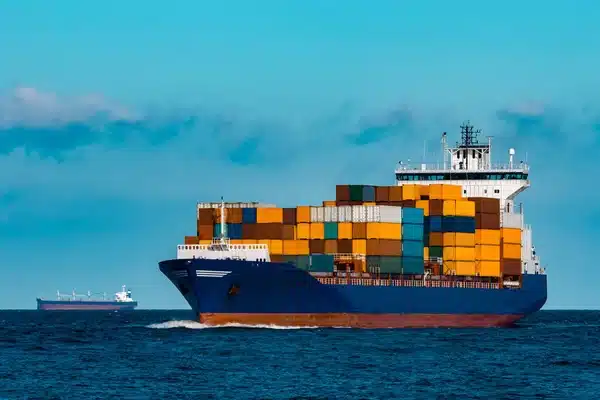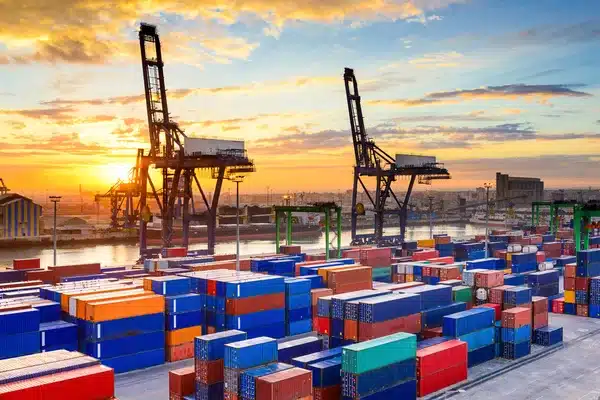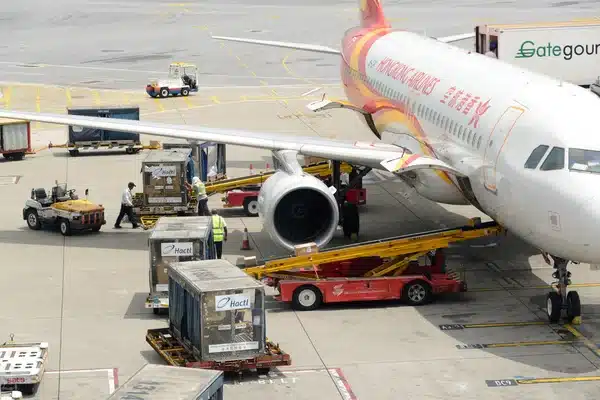Shipping from China to the United Kingdom plays a significant role for businesses that rely on imports to stay competitive in the global market. Whether you are importing consumer goods, machinery, raw materials, or other products, understanding the shipping options, costs, and procedures is key to optimizing your supply chain. With the UK’s growing demand for Chinese products and the need for cost-effective logistics, this comprehensive guide provides an overview of the shipping costs from China to the UK, the different options available, and practical tips to save on costs.
Freight shipping involves a number of steps, including selecting the right shipping method, understanding customs regulations, and managing costs effectively. This guide aims to help businesses make informed decisions by detailing the estimated costs for sea freight, air freight, and door-to-door services, as well as factors that affect these costs.

Table of Contents
Factors Affecting Shipping Costs
The shipping cost from China to the UK depends on several factors, such as:
Shipping Method: The cost varies depending on the choice of sea freight, air freight, or door-to-door services. Sea freight is the most cost-effective option for large shipments, whereas air freight is faster but more expensive.
Container Size and Type: For sea freight, the size and type of the container play a significant role in determining the cost. Standard sizes are 20-foot and 40-foot containers, with special types such as refrigerated or open-top containers costing more.
Weight and Volume: Shipping costs are often calculated based on the weight or volume of the cargo. Heavier or bulkier shipments typically result in higher costs.
Seasonality: Shipping costs tend to fluctuate based on the time of year. Peak seasons, such as Chinese New Year or the holiday shopping season, often see higher rates due to increased demand for shipping services.
Customs Duties and Taxes: Understanding the customs duty rate for your product is crucial, as this impacts the total cost of shipping.
Fuel Surcharges: Fluctuations in fuel prices can also influence shipping rates, especially for air and sea freight.
How Much Does Sea Freight from China to the UK Cost?
Sea freight is the most commonly used shipping method for importing goods from China to the UK, especially for bulky shipments. Below is an estimated cost breakdown for different ports.
Estimated Sea Freight Costs by Port
| Port of Origin (China) | 20ft Container Cost (USD) | 40ft Container Cost (USD) |
|---|---|---|
| How much does it cost to ship a container from Shanghai China to United Kingdom | $1,200 – $1,800 | $1,800 – $3,000 |
| How much does it cost to ship a container from Shenzhen China to United Kingdom | $1,100 – $1,700 | $1,700 – $2,800 |
| How much does it cost to ship a container from Ningbo China to United Kingdom | $1,300 – $2,000 | $2,000 – $3,200 |
| How much does it cost to ship a container from Guangzhou China to United Kingdom | $1,250 – $1,900 | $1,900 – $3,100 |
| How much does it cost to ship a container from Qingdao China to United Kingdom | $1,300 – $2,100 | $2,100 – $3,300 |
| How much does it cost to ship a container from Tianjin China to United Kingdom | $1,150 – $1,800 | $1,800 – $3,000 |
| How much does it cost to ship a container from Xiamen China to United Kingdom | $1,200 – $1,900 | $1,900 – $3,100 |
| How much does it cost to ship a container from Dalian China to United Kingdom | $1,300 – $2,000 | $2,000 – $3,200 |
Types of Sea Freight:
Full Container Load (FCL): FCL shipping is ideal for businesses that need to ship large volumes of goods. You book an entire container, providing more control over packing and reducing the risk of damage.
Less than Container Load (LCL): LCL shipping is suitable for smaller shipments that do not fill a container. You share the container space with other importers, making it a cost-effective solution for low-volume shipments.
Estimated Cost for LCL: $80 – $120 per CBM (Cubic Meter)
Transit Time: Sea freight transit time from China to the UK generally takes between 25 to 35 days, depending on the specific ports and the shipping route.

How Much Does Air Freight from China to the UK Cost?
Air freight is the fastest shipping method for transporting goods from China to the UK, making it suitable for urgent or high-value shipments. Below is an estimated cost breakdown for air freight between key airports in China and the UK.
Estimated Air Freight Costs by Airport
| Airport of Origin (China) to Airport of Arrival (UK) | Cost per kg (USD) |
| Beijing Capital International (PEK) to London Heathrow (LHR) | $3 – $5 |
| Shanghai Pudong International (PVG) to London Heathrow (LHR) | $3.5 – $6 |
| Guangzhou Baiyun International (CAN) to London Heathrow (LHR) | $4 – $7 |
| Chengdu Shuangliu International (CTU) to London Heathrow (LHR) | $4.5 – $7.5 |
| Shenzhen Bao’an International (SZX) to London Heathrow (LHR) | $5 – $8 |
| Hong Kong International (HKG) to London Heathrow (LHR) | $3.5 – $6 |
Door-to-Door Shipping China to the UK Costs
Door-to-door shipping is an ideal solution for businesses looking for a convenient and hassle-free shipping process. This service includes pickup from the supplier in China, international shipping, customs clearance, and final delivery to the destination in the UK.
Estimated Door-to-Door Shipping Costs
| Shipping Method | Cost (USD) |
| Sea Freight DDP (20ft) | $1,700 – $3,000 per 20ft container |
| Sea Freight DDP (40ft) | $2,400 – $4,000 per 40ft container |
| Air Freight DDP | $7 – $12 per kg |
Benefits of Door-to-Door Shipping:
Simplified Process: The freight forwarder manages all logistics, including customs clearance and local delivery.
Cost Certainty: DDP (Delivered Duty Paid) terms ensure that all duties and taxes are included in the cost, providing a predictable budget.
Customs Duties and Taxes China to the UK
The UK charges customs duties and taxes on goods imported from China, with the rate varying depending on the product’s HS code (Harmonized System code). Most imported goods are subject to a standard VAT rate of 20%, calculated based on the total landed cost, including customs duty and shipping.
Customs Duty: Customs duty rates depend on the type of goods being imported and are calculated based on the CIF value (Cost, Insurance, and Freight).
To accurately estimate customs duties and taxes, it is important to know the HS code for your product, as different products have different duty rates.
Tips to Reduce Shipping Costs China to the UK
Plan Shipments During Off-Peak Seasons: Shipping during non-peak periods can help reduce costs, as demand for shipping services is lower.
Consolidate Shipments: Combine multiple smaller shipments into one larger shipment to save on costs, especially for LCL and air freight.
Use FCL for Large Shipments: If you have enough goods, consider using FCL to reduce the per-unit cost of shipping.
Partner with a Reliable Freight Forwarder: A good freight forwarder can help navigate complex shipping routes and negotiate better rates.
Choose the Right Shipping Terms: Opting for DDP shipping can simplify the process and help avoid unexpected customs charges.

Frequently Asked Questions (FAQs) China to the UK
Q1: How long does it take to ship goods from China to the UK?
Sea freight takes approximately 25 to 35 days, while air freight takes 5 to 10 days, depending on the specific routes.
Q2: What is the most cost-effective shipping method for large shipments?
Sea freight is the most economical option for large shipments, especially if you use FCL.
Q3: What documents are required for customs clearance in the UK?
Key documents include the commercial invoice, bill of lading or airway bill, packing list, and certificate of origin.
Q4: How can I reduce shipping costs from China to the UK?
You can reduce costs by consolidating shipments, planning during off-peak times, using FCL, and working with an experienced freight forwarder.
Q5: What are the benefits of DDP shipping terms?
DDP shipping terms simplify the import process by making the seller responsible for all duties, taxes, and customs clearance, ensuring a hassle-free experience.
Conclusion
Shipping goods from China to the UK involves various factors that affect the overall cost, such as the shipping method, container size, and customs duties. By understanding these factors and selecting the right shipping strategy—whether sea freight, air freight, or door-to-door services—you can optimize your supply chain and control costs effectively. Working with a reliable freight forwarder and considering DDP shipping terms can simplify the process and provide a seamless shipping experience. For tailored logistics solutions and expert assistance with your shipments, contact our team at Tonlexing today.


